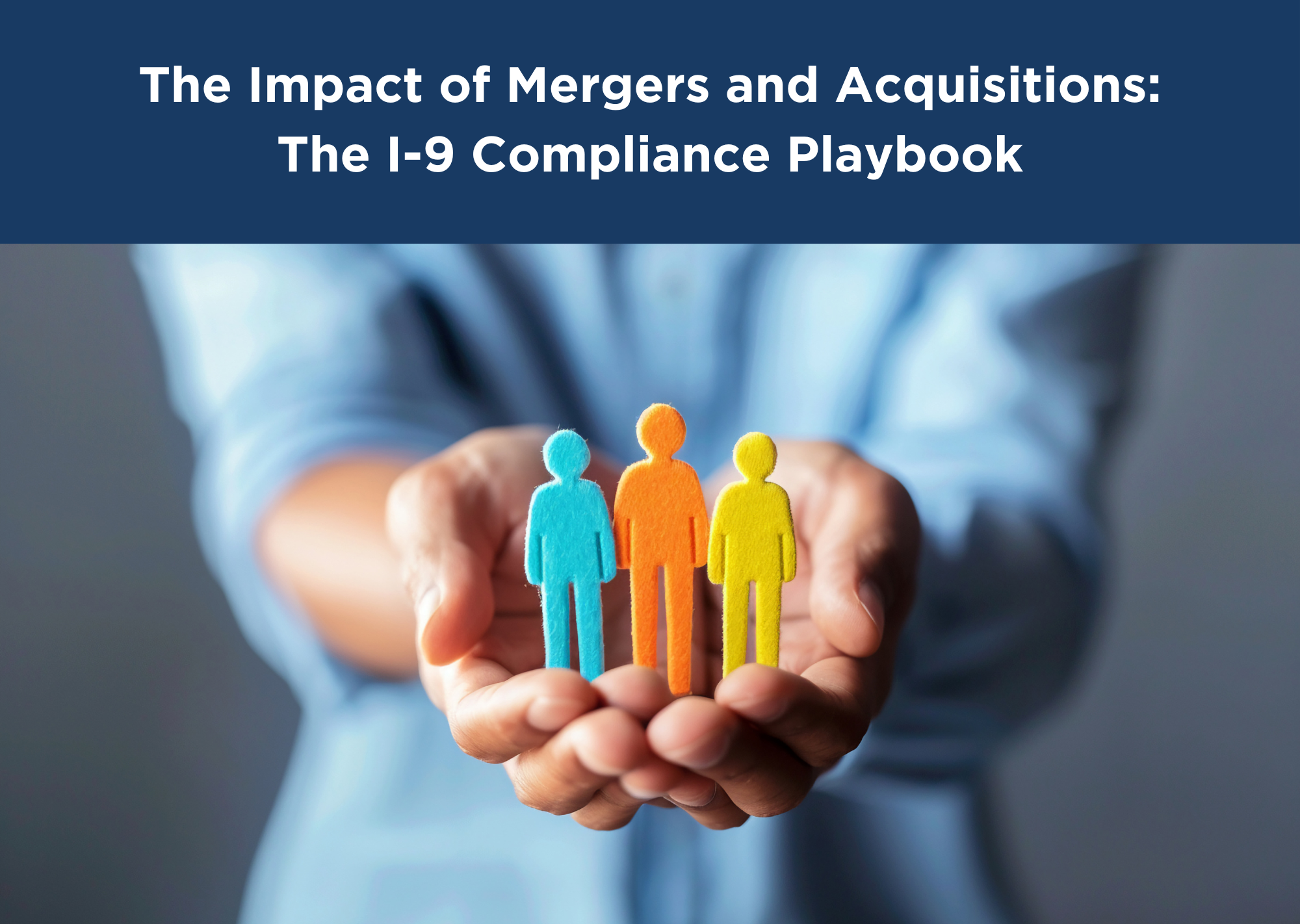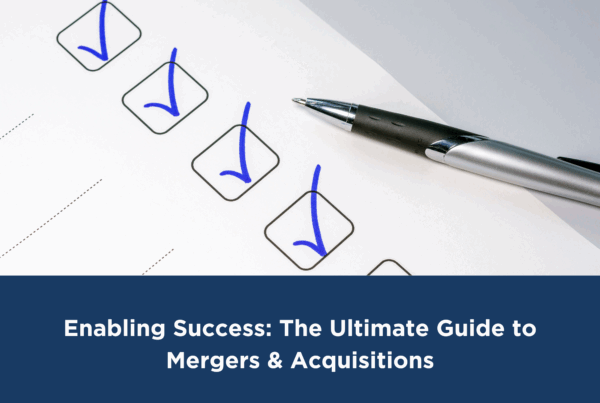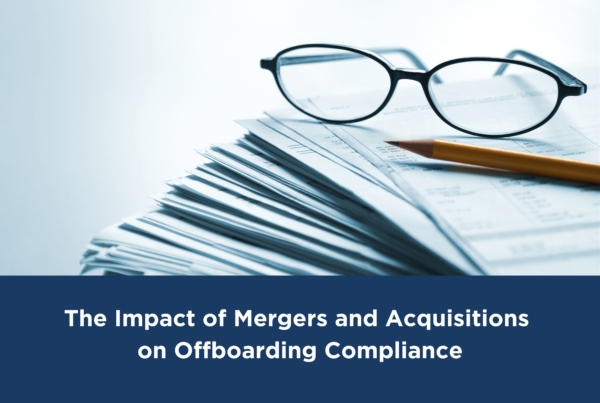
Article Written By The Workbright Team
Mergers and acquisitions (M&A) are exciting—new markets, expanded resources, and fresh opportunities. But amid the buzz of strategy sessions and celebratory press releases, it’s easy to overlook one small, unglamorous detail: Form I-9 compliance.
The Form I-9 is how the U.S. government ensures that every employee is authorized to work in the country. It might seem straightforward, but in the context of M&A, deciding what to do with all those I-9s can get complicated quickly.
If you’re in HR, legal, or operations, staying ahead of this process can save a lot of future stress. Here’s what you need to know to keep I-9 compliance smooth during a merger or acquisition.
What Happens to I-9s in a Merger or Acquisition?
There are two main options for handling I-9s during a merger or acquisition, and each comes with its own set of considerations. Let’s break down your options.
Option 1: Keep Existing I-9s
If you treat acquired employees as continuing their employment, you can retain their existing I-9 forms. Sounds easy, right? Not so fast. By choosing this route, your company inherits any past mistakes, omissions, or violations in those forms.
Remember—I-9 violations have risen to $281-$2,861 in 2025, so keeping existing I-9s that contain errors could add up quickly.
This is a great option if the I-9s are generally in good shape and you want to minimize operational disruption.
Option 2: Treat Employees as New Hires
Prefer a clean slate? You can start fresh by completing new I-9s for all acquired employees. This means treating them as new hires, regardless of how long they’ve worked at the company. Here’s what to remember:
- Their “hire date” is the merger/acquisition effective date.
- Section 1 must be completed by Day 1; Section 2 by Day 3.
- If you use E-Verify, you’ll need to run all these employees through the system again.
While this approach increases compliance confidence, it’s more labor-intensive, and failing to meet tight deadlines can lead to penalties or even staffing issues if work authorization problems arise.
The bottom line: Choose your approach based on the condition of existing forms and your company’s risk tolerance. A little upfront diligence can save you from big headaches—and even bigger fines—down the road.
Remote Workers? Foreign Ownership? Extra Layers Apply
With so many companies now hybrid or remote, verifying I-9s gets trickier. If you have remote workers, you’ll need a process for document inspection that meets USCIS guidelines. M&A involving foreign companies acquiring U.S. operations need to pay close attention, too—even if the parent company is abroad, U.S. immigration law still applies to the U.S. workforce.
Additional Considerations: Smart I-9 Moves During a Merger or Acquisition
It’s always recommended to consult with legal counsel as part of an M&A, but here are general best practices to facilitate a smooth, compliant transition.
1. Audit the I-9s Before the Deal Closes
This isn’t something to save for after the paperwork is signed. Before you merge, get a clear picture of what you’re inheriting. Review I-9s for completeness, proper documentation, and errors.
Pro tip: Pay extra attention to Section 2 (employer review) and any employees with temporary work authorizations.
2. Decide: Keep or Re-Verify?
If the forms are clean and the merger allows it, you can keep the original I-9s. But if there’s doubt—missing forms, expired documents, poor recordkeeping—start fresh. Determine whether the M&A activity triggers E-Verify requirements, which would now mandate you to use E-Verify for new and ongoing I-9s.
You can ask employees to complete a new I-9, but do it consistently. Don’t single anyone out or base your decisions on national origin or immigration status. That’s a quick path to a discrimination claim.
And remember, if you are doing this as a best practice, document when you are starting the process and what time an employee has to complete the new I-9 or risk termination.
3. Train Your HR Team on the New Rules
Post-merger, everyone needs to be on the same page. Update your I-9 policies and train your HR teams on the latest compliance rules. If you will be using E-Verify, ensure team members are well-trained on case management. If you’re not already using an I-9 platform with an E-Verify integration yet, now’s a great time to consider it.
4. Store, Secure, and Purge
Federal law requires you to keep I-9s for three years after hire or one year after termination, whichever is longer. Have a system to track this and securely store (or destroy) forms as needed.
5. Document Your Compliance Strategy
ICE likes paper trails—especially if there’s an audit. Keep records of your I-9 decisions during the merger: what you kept, what you reverified, and why. It could save you serious headaches later.
Thomas & Company in Partnership with WorkBright
Don’t let I-9 compliance be an afterthought. M&A inherently involves risk, but overlooking I-9 compliance shouldn’t be one of them. It’s easy to push it down the priority list, but that mistake can lead to costly fines, legal issues, and reputational harm. A few proactive steps can make all the difference. Before celebrating the close of your deal, ensure your I-9s are in order, your policies are up to date, and your team is fully prepared—because in a merger, compliance isn’t optional; it’s mission-critical.
To help you navigate this process with confidence, Thomas & Company, in partnership with WorkBright, offers a seamless, end-to-end HR compliance solution. From I-9 verification to wage documentation and beyond, we provide expert support to keep your workforce aligned and compliant before, during, and after the merger or acquisition.
More M&A Content
Don’t forget to check out our previous articles on all facets of M&A activity impact.



